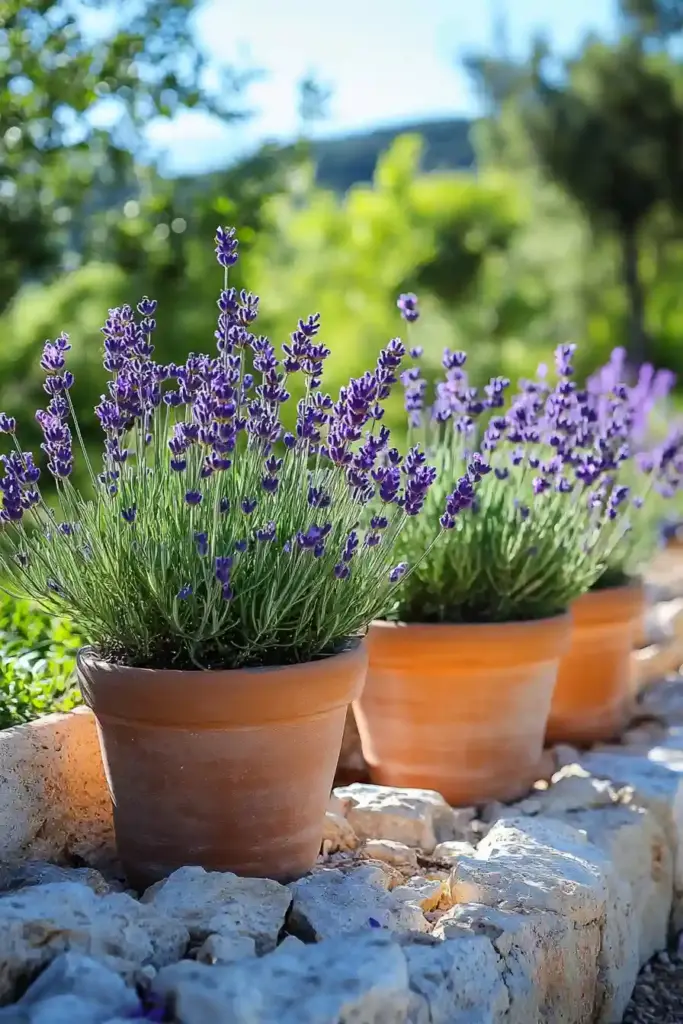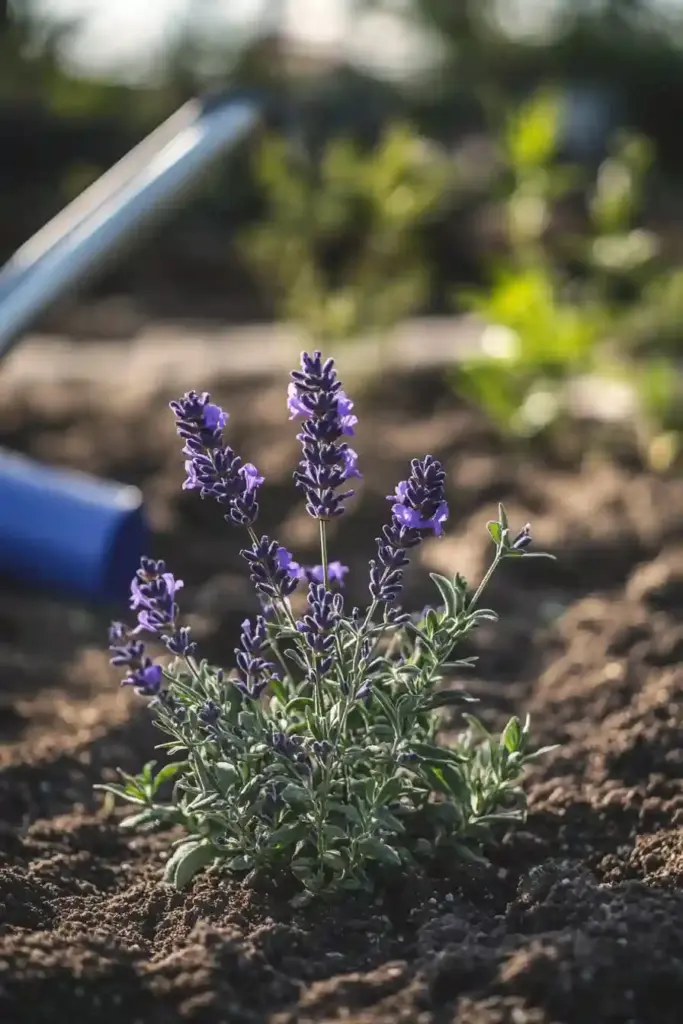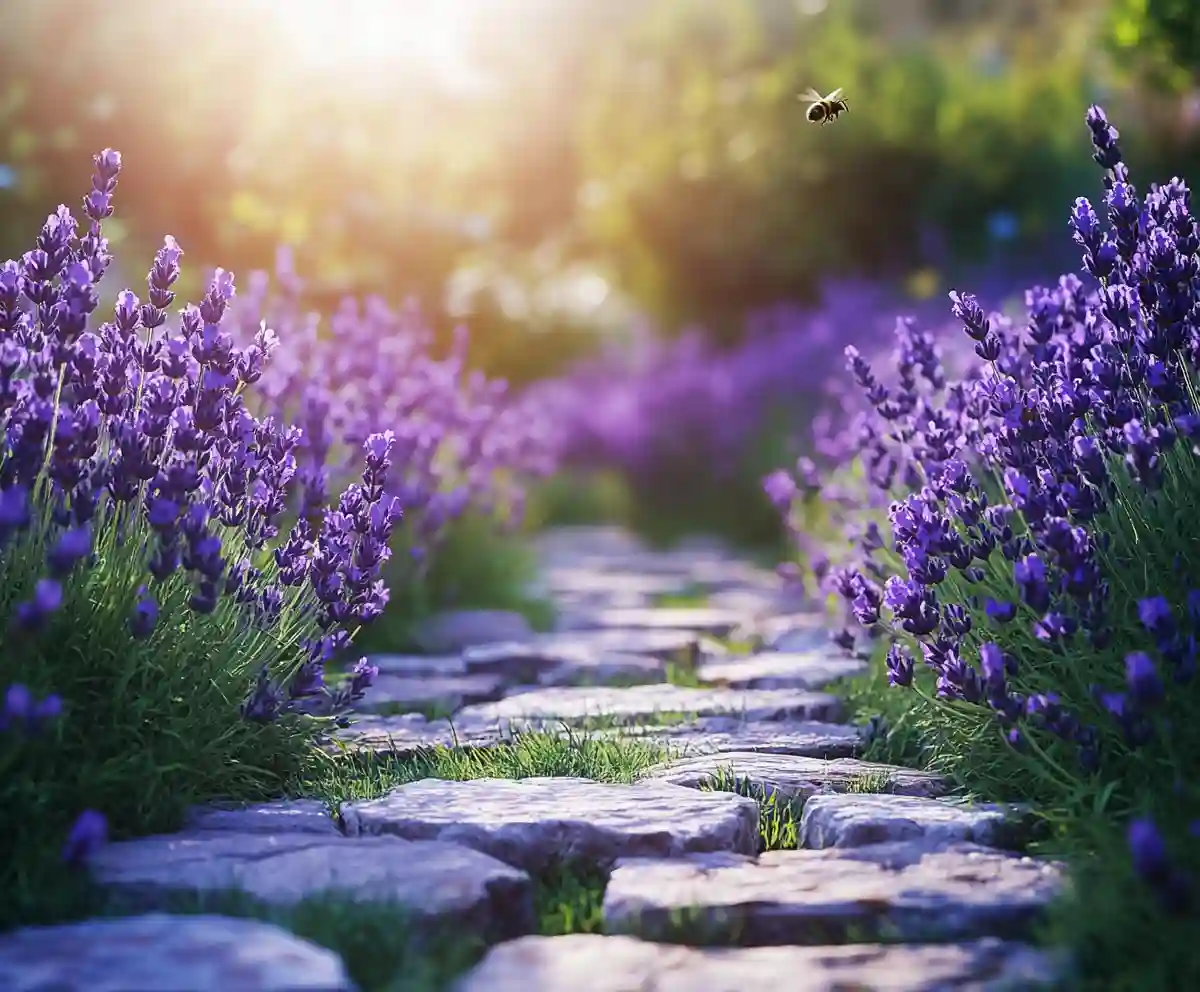Few plants bring as much charm, calm, and color to the garden as lavender. Known for its intoxicating fragrance and stunning purple blooms, lavender is not only a favorite among gardeners—it’s also surprisingly easy to grow with the right know-how. Whether you’re planning to plant it in garden beds, on sunny slopes, or in decorative containers, understanding how to plant lavender the right way will reward you with years of blooming beauty and sweet-smelling air.
This guide covers everything you need to grow healthy, lush lavender, from choosing the best spot to mastering pruning and propagation.
If you’re looking to expand your garden’s style, consider exploring our guide Create an English Garden with These 14 Classic Flowers. This companion article offers inspiration and practical tips for blending the timeless charm of classic English blooms with your lavender, helping you design an outdoor sanctuary full of color, fragrance, and elegance.
🌞 Where Should You Plant Lavender?
Lavender is native to the sun-drenched hillsides of the Mediterranean, and it thrives in similar conditions—warmth, sunshine, and excellent drainage.
Here are some ideal spots and setups to consider:
- Sunny slopes and rock gardens: Perfect for drainage and air circulation.
- Mixed borders with other drought-tolerant perennials: Lavender plays well with many companion plants.
- Large containers on patios: Especially great for compact varieties like ‘Big Time Blue’.
- Wild or rustic garden designs: Lavender’s relaxed, flowing growth makes it a perfect fit.
🪴 Pro tip: If you’re working with clay or heavy soil, consider raised beds or pots with well-draining potting mix.
🛠️ Lavender Planting Essentials: Light, Water, Soil & Feeding

Getting lavender off to a great start isn’t difficult—but it does require the right conditions. Here’s what your plants need to thrive:
☀️ Light: Full Sun for Full Blooms
Lavender is a sun-worshipper. It needs at least 6 to 8 hours of direct sunlight per day—more is even better. Full sun encourages strong growth, vibrant color, and an abundance of blooms.
- Plant in the sunniest spot in your yard or balcony.
- Avoid shaded areas, which can cause poor flowering and leggy growth.
🌿 Quick Tip: If you’re in a humid climate, make sure plants have plenty of space for air circulation to prevent fungal issues.
💧 Water: Less Is More
Lavender is drought-tolerant once established, so skip the heavy watering. Overwatering is one of the quickest ways to kill your plant.
- Water once every 2–4 weeks during the growing season (spring to mid-fall).
- Allow soil to completely dry out between waterings.
- During the first year, water more regularly to help the roots get established.
🚫 Avoid soggy soil—lavender doesn’t like wet feet!
🌱 Soil: Drainage Is Critical
Lavender demands soil that drains fast and stays relatively dry.
- Ideal soil: Sandy or loamy, slightly alkaline (pH 6.5–7.5)
- Avoid: Heavy clay or compacted soil
- Add gravel, sand, or perlite to improve drainage if needed
💡 Tip: Raised beds or terraced areas work well in cooler climates where drainage can be an issue.
🌼 Feeding: Light on Fertilizer, Heavy on Fragrance
Too much fertilizer = too much leafy growth and less fragrance—which defeats the purpose of lavender!
- Mix a few inches of compost into the soil when planting.
- Fertilize once a year in fall with a low-nitrogen mix (like 2-1-1).
- Avoid overfeeding—it can lead to weak stems and fewer blooms.
🌸 Remember: Less is more when it comes to feeding lavender.
🌿 How to Propagate and Prune Lavender for a Healthier Garden

Mastering propagation and pruning gives you control over how your lavender grows—and how much of it you can enjoy season after season.
🌱 Propagation: Growing New Lavender the Easy Way
Lavender isn’t a fan of being divided like other perennials, but that doesn’t mean you can’t multiply your plants. The trick? Focus on rooting stems.
Here’s how to do it:
- Look for stems that have touched the soil—they may have already begun to root.
- In early spring, gently dig around those stems and clip them away from the main plant.
- Replant rooted cuttings into new pots or directly into well-prepared garden soil.
🪴 Optional method: Take softwood cuttings in spring, dip in rooting hormone, and plant in a moist, sandy mix until roots form.
🌿 Pro Tip: Keep new cuttings shaded and moist for the first few weeks until roots establish.
✂️ Pruning: Keep It Shaped, Strong, and Blooming

Pruning isn’t just about looks—it’s about long-term health and abundant flowering. Lavender blooms on new growth, so trimming at the right time is key.
When to prune:
- Spring: Cut back about 1/3 of the plant to promote new growth.
- After flowering: Lightly trim to shape the plant and encourage a second flush of blooms.
- Any time: Remove dead or damaged stems to maintain health.
How to prune:
- Always prune down to about 2 inches above the woody base—never into the wood itself.
- Use sharp, clean shears to avoid crushing the stems or spreading disease.
🌸 Bonus: You can save pruned stems to dry and use in sachets, arrangements, or homemade oils.
🌼 Final Thoughts: Growing Lavender with Confidence
Learning how to plant lavender isn’t just about gardening—it’s about bringing a little peace, beauty, and aroma into your life. With its easy-care nature and stunning presence, lavender is the perfect addition to sunny gardens, raised beds, or container displays.
By giving it the right soil, sun, and a light touch with water and fertilizer, you’ll be rewarded with seasons of fragrant blooms. And with a little pruning and propagation know-how, you can keep your lavender thriving and even share it with friends.
So grab your gloves, prep your soil, and let this timeless plant transform your outdoor space into a relaxing, lavender-scented haven.


